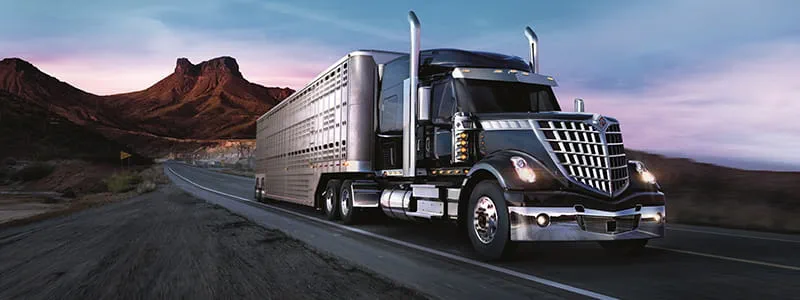Remanufacturing in the USA: it’s a long way from its roots in farming but Navistar thinks that reman is the future – and the company has big plans for electricals and all-makes products going forward... Rematec News US correspondent Denise Rondini finds out more.
It’s a long way from the farmland of the US in the 19th century to the production of electrical components – but Navistar has been on a big journey. The trucking company’s roots are – literally – in farming machinery. But by the 1980s, times were hard for farmers and the agricultural business was sold. The company was renamed Navistar International Corporation and decided to focus on building trucks, buses and engines.Times have not only changed for the company as an OEM. Navistar executives also see remanufacturing as a key area of interest now and in the future – and in particular they are looking at growth in the reman of electronic components.
Electronics expansion
To prepare for that, Robert Ongkobudidjojo, Navistar’s manager of reman product development, explains that two years ago the company expanded its reman resources. “We hired more engineers especially on the electronics side. We have people who have been working on reman electronics so they understand which components we can reclaim, which components we can validate, and which components needs to be replaced during the remanufacturing process.”
The company recently announced a rebranding of its existing reman operation, ReNEWed, and has pledged to add several new product lines this year, starting with the 2015 N13 engine and the 2010-2016 engine - as well as expanding the portfolio of reman electronic components such as engine control modules, instrument clusters and body controllers.
“These are products that are at the right point in their life cycles and are ready to be launched into the market,” Ongkobudidjojo says. In the past Navistar was not focused on reman electronics “but now there is a lot of opportunity”.
Timeline: Navistar
1902 International Harvester Company founded following merger of McCormick Harvesting Machine Company and Deering Harvester Company
1986 Navistar International Corporation is formed
1987 Thousand Series truck line launched
2004 First commercial diesel/electric hybrid on the market, the 4000 Series Hybrid, introduced
2009 LoneStar heavy truck is unveiled
2012 Navistar and Anhui Jianghuai Automobile Co receive Chinese government approval for joint venture
2018 ReNEWed remanufacturing brand is relaunched
Supplemental offering
TJ O’Hanlon, director of private label brand at Navistar, explained that part of the strategy for the ReNEWed line is to expand the company’s reach. “We understand that the first owner of the vehicle is going to come back and buy a genuine OE product [when they need a replacement part], but as the truck gets traded it is important for us to come up with a supplemental offering essentially at a lower price for the second and third owner. That is where the reman product line fits in.”
One common theme for many of the products being launched, according to Mark Reiter, Navistar’s vice president of product support, is the fact that the truck or the engine that these are replacement components for are is no longer in production. “In some respects remanufacturing is a necessity because the suppliers of those components have moved on and are no longer supplying the products for production,” he adds.
Being an OEM gives Navistar an advantage when it comes to reman, Reiter continues. “We know what was wrong with those products [during their life]. We know all the failure modes so Robert and his team address those issues in the reman operation. In some ways the ReNEWed products are better than new.”
He explains that having a reman option fits into the company’s ‘good-better-best’ strategy. Sometimes a customer’s decision to go with reman is based on cost and sometimes it is more the fact that they want the product to be more like OE and will therefore go with a like-for-like replacement: “In all cases, we provide the options we think will keep the customer in the Navistar family.”
Life blood
Historically, cores have been a problem area in any reman operation even though they are key it is success. Ongkobudidjojo says: “Cores are the life blood of remanufacturing, and Navistar has done a good job holding on to cores.”"In 2016 the company launched its Core Advantage Program, which to has allowed the company to complete the buyback of 1,100 vehicles.
According to Reiter, Navistar addresses the core issue from first production of a product: “As part of the product development process we plan what the core is going to look like and we strategically apply core charges then to make sure that there is a benefit to return the core to us so we can deliver high quality remanufactured products.”
The reman team is particularly proud of is its work with diesel particulate filters (DPF). “When we launched our DPF reman programme, it was the first in the industry,” Ongkobudidjojo explains. “That is was a big accomplishment for us.” Reiter believes that aftertreatment components like diesel oxidation catalysts and DPFs are some of the fastest-growing parts categories in the aftermarket, although they “didn’t exist eight to ten years ago”.

Mark Reiter and Robert Ongkobudidjojo
DPF alternatives
He adds: “We really had to adapt and make changes in order to be able to supply them. Eventually DPFs are going to go out of production and you are going to have to have a reman alternative.” Ongkobudidjojo says Navistar is in a good position to capture that business because it owns the calibration of the proprietary components, has the resources to validate them and has the testing facilities to ensure quality.
As for the future, Reiter is optimistic. “We have grown in double digits for several years in a row now and we have plans to introduce more products, more components that are falling into the sweet spot of their product life cycle and would therefore qualify for reman. We plan to keep up our efforts and achieve double digit growth for each of the next five years.”
However, the future will not be without its challenges. Ongkobudidjojo believes at this point that there is enough demand out there for reman. Looking ahead, everyone is interested in electric vehicles and if the industry switches to electric vehicles the challenge is ‘can we remanufacture and can we repurpose batteries?’”
Another area of focus for the future is in the all-makes reman space with the company’s Fleetrite brand. “We want to start to get into remanufacturing components for our competitors’ vehicles,” O’Hanlon said. “That potentially presents some challenges for us. One of the things we say with ReNEWed is that we have a team of engineers that have expertise with our vehicles. When we get into our competitors’ vehicles we don’t have all [the product] information.”
The company will have to rely for data on its own supply base as well as Ongkobudidjojo’s development engineers to ensure the quality of all-makes reman products is good enough.
But no matter what the future holds, O’Hanlon concludes: “The reman brand has been around since 1951.” Sounds like Navistar is staying in it for the long haul.






